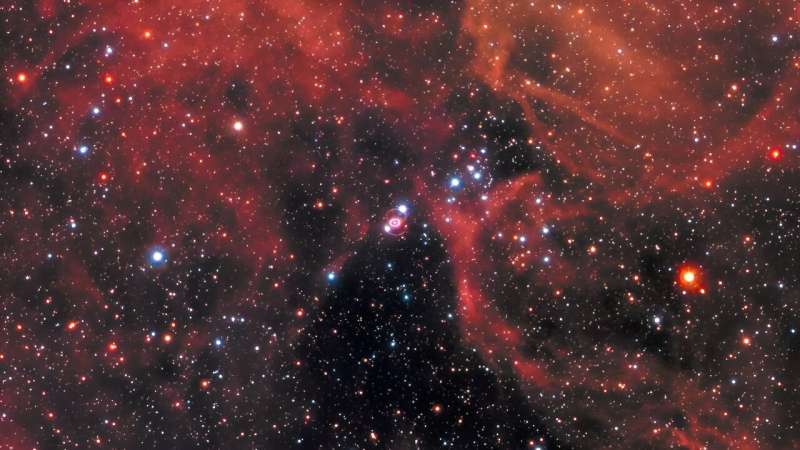This article has been reviewed according to Science X's editorial process and policies. Editors have highlighted the following attributes while ensuring the content's credibility:
fact-checked
preprint
trusted source
proofread
Astronomers are hoping to detect gravitational waves coming from supernova 1987A

A supernova explosion is a cataclysmic explosion that marks the violent end of a massive star's life. During the event, the star releases immense amounts of energy, often outshining the combined light from all the stars in the host galaxy for a very brief period of time. The explosion produces heavy elements and spreads them out among the stars to contribute to the formation of new stars and planets.
The closest supernova in recent years occurred in the Large Magellanic Cloud in 1987 (SN1987A) and now, a team of astronomers have searched through mountains of data to see if they can detect gravitational waves from the remnant.
During the majority of a star's life there is stability. As a star continues to age, it fuses elements in the core and there is an outward push known as the thermonuclear force. This is balanced by the inward pull from gravity trying to collapse the star and for the majority of its life, these two forces balance.
When stars like the sun die the thermonuclear force overpowers the force of gravity and the outer layers are gently lost in space through the red giant and planetary nebula phases. More massive stars, from around eight times the mass of the sun or more, gravity overpowers the thermonuclear force which temporarily ceases as the star dies and the star implodes. It is this process which is known as a supernova. The end result is dependent on progenitor star but can either be a neutron star, a pulsar or even a black hole.
In 1987 a star exploded in the Large Magellanic Cloud and, even thought it was still 168,000 light years from Earth it afforded astronomers a great opportunity to study a supernova up close, closer than ever before. At the heart of the slowly expanding supernova remnant is a neutron star (NS1987A—the detection of neutrinos confirmed this) the remains of the core of the progenitor star. As the core collapsed, all the protons and electrons fused together to form one massive, gigantic, even colossal…. neutron about 20km across.
Neutron stars are not perfect, their surfaces are likely to have imperfections in them and as they rotate, the lumps and bumps—however tiny—are likely to cause gravitational waves. As their name suggests, gravitational waves are ripples just like waves on the ocean but instead of propagating through water, they propagate through space and time. The first waves were discovered in 2015 using the Laser Interferometer Gravitational Wave Observatory (otherwise known by the catchy title LIGO).
Tsvi Piran and Takashi Nakamura suggested way back in 1988 that it may be possible to detect gravitational waves from neutron stars but it wasn't until the gravity wave observatories like LIGO came online that the potential for proving this became a reality. In 2022 an unsuccessful attempt was made to detect gravity waves from NS1987A using the Advanced LIGO system and another gravitational wave observatory called VIRGO. The search covered frequencies of 75 to 275 Hz.
In a paper just posted to the arXiv preprint server by Benjamin J. Owen, Lee Lindblom, Luciano Soares Pinheiro and Binod Rajbhandari a further attempt is described utilizing data from the Advanced LIGO and a further set of data from VIRGO. In this attempt, enhanced code was used that widened the frequency band from 35 to 1050 Hz. Unfortunately the search was again, unsuccessful but the team are not giving up.
Further searches are planned using data from Advanced LIGO and from another observing run from VIRGO and even the Cosmic Explorer observatory when it is finally commissioned and hopefully will final reveal gravity waves from neutron stars in the coming years.
More information: Benjamin J. Owen et al, Improved Upper Limits on Gravitational Wave Emission from NS 1987A in SNR 1987A, arXiv (2023). DOI: 10.48550/arxiv.2310.19964
Journal information: arXiv
Provided by Universe Today





















